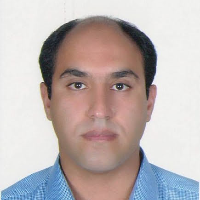Mangrove Land-context: Iranian Marine Garden City Metaverse (Combination of Natural and Virtual Platform)
The space syntax and its models is a method of visualizing the spatial relationships of places and analyzing the environmental configurations of settlements, in which novel titles such as territorial land-contexts, land-texts and configuration are examined as components of spatial analysis in the arrangement of settlements and the environmental relations of settlements.
Coastal land-contexts are among the geographical land-contexts that are the legacy of sea level changes and where a large population of people of the world have settled. What becomes important in this research is the understanding of the geographical analysis of the rules of the layout of the coastal land-context, which has created a unique identity and differences in the landscape and diverse social and environmental configurations. The fundamental question here is that the southern coast of the country with the unique nature of the mangrove marine ecosystem can be introduced as a marine garden city, in a way that, inspired by the rich Iranian-Islamic culture, meets the needs of a new sea-based civilization.
The current research is compiled according to the phenomenology method;
In the first step, it was determined and recognized the space of the research field. Then, by field investigation and study of library sources and articles, the database was collected.
In the next step, the frequency distribution of the research hydrogeomorphic arrays (height, slope, slope direction) is first analyzed as two spatial dimensions, and then the two parameters of distance from the coast and distance from waterways in relation to the number of foci Demographics and their population are analyzed in the scope of the research.
In the next step, relying on the phenomenological method, it has been analyzed (urban and rural settlements) and after identifying and analyzing the existing social configurations and their identity context, it has been introduced to Marine Garden City Metropolis and the role of configurations We examine the existing social issues in creating a new and smart configuration of Marine Garden City Metropolis.
Hydrogeomorphic Arrays
Height as the first hydrogeomorphic component is examined in order to limit the development of settlements. The results show that with the increase in altitude above sea level, the number of urban and rural settlements and their population decreases.
The second hydrogeomorphic component is the slope. The results show the number of urban and rural settlements and their population in the 0-2 percent slope class has increased and the difference between this class and other classes has increased.
The third hydrogeomorphic component is the direction of the slope. The results show that most of the urban and rural settlements are located in the direction of the slope from east to west.
Distance from the beach
The results show that most of the urban and rural settlements are located at a distance of 5 kilometers from the coast, and with the distance from the coast, a decreasing trend in their number and population is observed; As a result, the beach is considered the best factor in attracting the population of urban and rural settlements.
Distance from waterways
The results show that the largest number and population of urban and rural settlements have been formed at a distance of 500 meters from waterways, and as this distance increases, the number and population of urban and rural settlements decreases.
Explanation of mangrove land-context and social configurations
The mangrove land-context has a unique identity that has created various landscape differences and environmental configurations. In order to explain and extract the logic of the land-texts syntax in the mangrove land-context, the transformational role of the distance of the settlements from the waterways and the distance from the coast in this area is addressed, and the population centers of the mangrove land-context are explained as the land-texts of the research scope. Each environmental social configuration in the mangrove land-context have an independent and unique identity, which are described in the form of urban configuration, rural configuration, nomadic configuration, coastal configuration, and mangrove configuration.
In this research, while proposing new concepts in the knowledge of geography with the phenomenological method, some fundamental issues of social configurations existing in the coastal mangrove land-context were explained and analyzed. In the first step, "mangrove land-context" was introduced and analyzed. Also, in order to identify and obtain the environmental components and to examine the layout of the population centers of marine garden city, some of the environmental components effective in the establishment of these coastal civil centers were selected and analyzed.
Distance was considered as the most important basis of place identity in the spatial analysis of marine garden city, because this index has served as the most attractive component in the history of settlements on the northern shores of the Persian Gulf. Also, by examining and analyzing the syntax of population centers in the scope of the research, urban, rural, fishing, mangrove and nomadic configurations were identified.
Considering the above and regional competition and its continuation in the Persian Gulf, the development of coastal areas should not be focused on population displacement, but the creation of coastal settlements in the form of marine civil production centers is a good solution against the formation of sea-based and air-based development in the southern coasts of the Persian Gulf. Therefore, it can be concluded that the interaction of the coast and the sea is the main factor in the formation or revival of a maritime civilization or a pattern of sea-based civilization based on a unique natural environment, i.e. mangrove habitats, which can be considered as a complementary necessity. Continental civilization is part of Iran's long-term development and progress goals, which is the fundamental infrastructure for the crystallization of maritime civilization and guarantees Iran's dynamism in international scenes.
- حق عضویت دریافتی صرف حمایت از نشریات عضو و نگهداری، تکمیل و توسعه مگیران میشود.
- پرداخت حق اشتراک و دانلود مقالات اجازه بازنشر آن در سایر رسانههای چاپی و دیجیتال را به کاربر نمیدهد.




